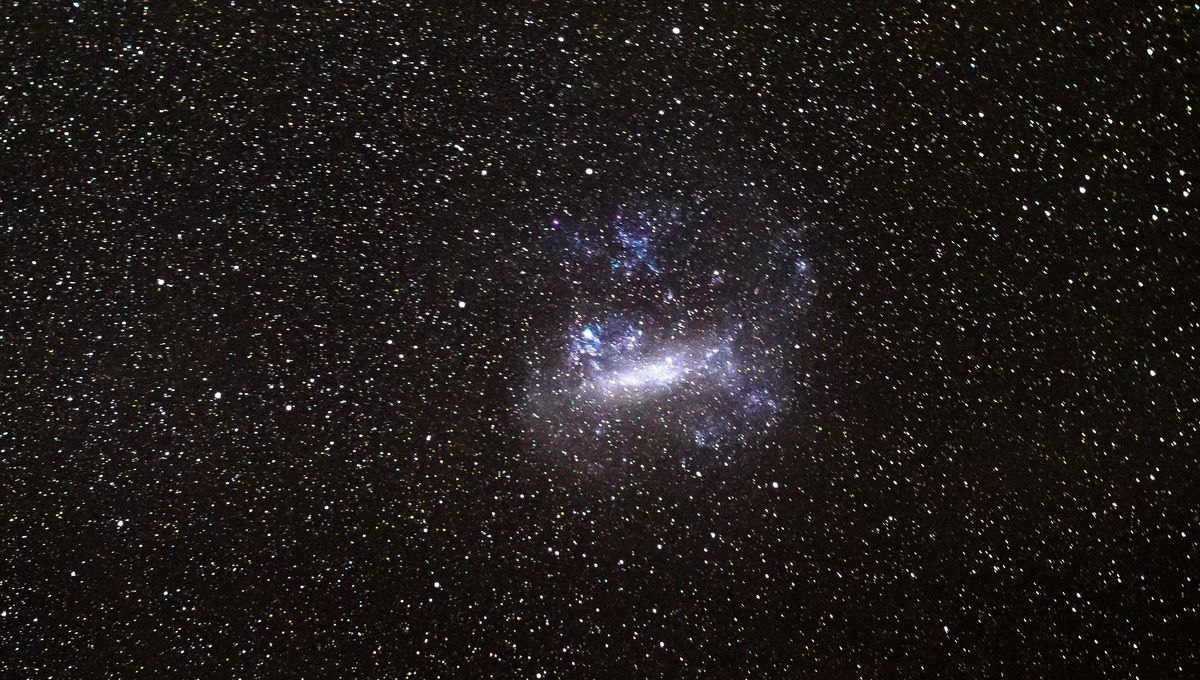
The total lunar eclipse drew millions of people’s attention to the Moon. Soon, perhaps, there will be astronauts there long enough to experience an eclipse there. Astronomy on the Moon will have both similarities and important differences to Earth. So how do pole stars fit into that, and what are the implications for navigation?
ADVERTISEMENT
As previously discussed, the fact that the Northern Hemisphere currently has a pole star – a star so close to the northern celestial pole that it doesn’t appear to move and can be used to find north – is a historical fluke. The Southern Hemisphere currently lacks a usefully bright pole star, although it’s had them (sort of) in the past.
In another explainer, we looked at which other planets in the Solar System have pole stars, but what about our own Moon? This is likely to be relevant information much sooner than the other planets, given that plans to put a temporary base on the Moon even have candidate locations, while crewed missions to Mars are mostly fantasy.
The lunar axis
Like all large bodies in the Solar System, the Moon rotates around an axis. The Moon is so much under Earth’s spell, we might expect that axis to be aligned with ours, giving it the same celestial poles as Earth. If so, this would mean the same North Pole Star – Polaris – and absence of a southern counterpart, but that’s not the case.
The Moon’s orbital plane around the Earth does not perfectly align with the equator, which is why full Moons some years are further north or south than others. Moreover, while the Earth is tilted at 23.4 degrees relative to its orbital plane, the Moon’s axis is almost at a right angle. That angle, however, is with the joint Earth-Moon orbital plane around the Sun, not with the lunar orbit around the Earth.
What that means is that the axis on which the Moon turns is more closely aligned with the Sun’s than the Earth’s. Come to think of it, the Sun and Moon take quite similar times to rotate. If you think of the Moon as having the Sun and Earth as parents, it’s pretty clear which one it favors.
The Moon wobbles a bit in its alignment on a precession cycle of 18.6 years, in contrast to the Earth’s 26,000, so its celestial pole moves much more rapidly than our own does. However, the movement is also much smaller, so a 10-year-old would be good enough for most purposes. Although its axis is moderately well aligned with the Sun’s, it’s actually a great deal closer to those of Venus and Jupiter, in fact almost perfectly aligning with each at times in the course of its wobble. Grant Hutchison’s blog, The Oikofuge, has a handy chart.
Not much of a pole star
Unfortunately, the Moon’s North Celestial Pole traces its circle in an area of the constellation Draco where there are no nearby naked-eye stars. The closest thing to a suitable pole star is Altais (Delta Draconis), which is not all that close and, at 3rd magnitude, also not particularly bright.
Things are better in the southern hemisphere, with the Moon’s South Celestial Pole lying in Dorado. There aren’t any bright stars in that constellation at all, and the closest is Delta Doradis, which has a magnitude of 4.3 (higher magnitudes are fainter). That means you can’t see it from Earth unless you get well away from pollution, but that shouldn’t be a problem on the Moon. At least it‘s currently very close to the Moon’s South Celestial Pole, and never gets far away.
More significantly, the lunar South Celestial Pole is only a few degrees away from the Large Magellanic Cloud, one of the most easily recognized objects in the southern sky away from city lights.
How useful would this be?
Imagine an astronaut who gets lost on the Moon when their communication systems go down. Despite plans for a lunar GPS, we are not sure we would trust it, so being able to navigate by the stars would be a good idea, particularly since there isn’t a useful magnetic field to direct a compass.
ADVERTISEMENT
Hopefully exploratory missions will come equipped with a sextant and knowledge of how to use it, but if not, missions on the near side of the Moon could use the Earth to orient themselves to some extent. It would certainly be hard to miss.
Things are different on the far side, and here, the stars could be very handy indeed for anyone making a trip during the long lunar night. Plans for future bases are focused on the lunar south pole, where water is believed to be most accessible. So, fortunately for our imagined astronaut, it’s probably the southern sky they will be looking at in an effort to find their way home. If you think about it, it’s impressive to use a ball of fire hundreds of light-years away to guide one, but a galaxy tens of thousands of light-years from us is better still.
Source Link: Does The Moon Have A Pole Star And Is It The Same As Earth’s?